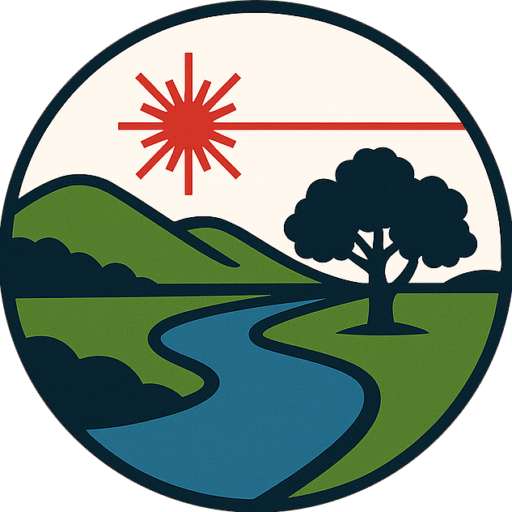2023-2025: Experiments with Magnetic Weyl Semimetals
This project is in the process of being published. A log entry will come once I am clear to freely discuss the project.
2021-2023: MIR Metasurface Phase Modulator
This project is in the process of being both published and patented. A proper log entry will come once I am clear to freely discuss the project. The first of two manuscripts on the device was open-source published in July 2025 in Optics Express.
In the meantime:
My previous lab group at TTU focuses heavily on pushing optical physics into the far-infrared. The FIR is an extremely challenging part of the spectrum, which has historically been under-explored and under-utilized. The main issue is that there is a massive deficit of suitable materials and optical devices that work in the FIR/THz regime. This makes sense because these wavelengths straddle the boundary between electronics and optics. Compared to the near-infrared (if you describe your wavelength in terms of nanometers, I consider you NIR), the FIR is a waking nightmare. Everything must be done with uncoated gold mirrors instead of lenses. Vacuum and cryostat windows tend to absorb 90% of your precious signal. Detectors are slow, expensive, and often require cryogenic cooling. Detector cards don’t really work, so alignment is an act of continuous shots in the dark. Lasers in the FIR are possible, but absurd in price. Incoherent sources struggle in both stability and power output.
This is not to say that interesting physics doesn’t exist in the FIR. In fact, some of the most intriguing material properties and collective excitations, like phonons, polaritons, and low-energy electronic transitions, live in this range. The FIR is where you can directly probe lattice vibrations, observe exotic charge dynamics, and study strongly correlated systems in ways that are simply not accessible at shorter wavelengths. It’s rich with information, but extracting that information requires a fight with the hardware every step of the way.
This project is about a metasurface device that promises to provide a first-ever means to control optical phase in the MIR and FIR on-chip, enabling physicists with a practical way to do FIR polarimetry. Proving its functionality required inventing a completely new measurement technique, and that’s where I came in.
I created a way to measure a change-in-polarization spectrum. The method is based on frequency mixing across spectral and polarimetry signals, and allows the experimenter to measure optical rotation and ellipticity vs wavenumber in a single shot. This information was necessary to confirm the underlying mechanism of the device, which involved surface-phonon polaritons coupling with surface plasmon polaritons.
Since both the sample and the technique were new, we needed to validate. I spent a summer at the Navy Research Lab in DC, where I carried out a classical monochromatic polarimetry experiment in the MIR. The results confirmed the new spectroscopic method.
2019-2021: Quantum Sensing
In 2019, quantum information research became an intense buzz word in academia. I had just finished my M.S. course work in physics, and teamed up with a new professor at TTU. We had a fresh lab space, and an idea for a quantum sensing project.
The project focused on building a tunable quantum sensor using a rare-earth spin qubit integrated into an active optical cavity. We used a single erbium ion, chosen for its narrow optical transitions and long coherence times in the near-infrared, as our qubit. To enhance and control its spin coherence lifetime, we wanted to embed the ion near a resonant cavity structure engineered for Purcell enhancement. The cavity would consist of a VO₂ thin film deposited on a gold mirror and sapphire substrate. VO₂ is a phase-change material whose optical properties can be tuned via temperature, allowing dynamic control of the cavity resonance condition. By drop-casting Er ions onto the VO₂ surface and tuning the cavity thermally, we hoped to influence the ion’s emission characteristics. The system was to be characterized in an optical cryostat under an external magnetic field using pulsed laser excitation and Raman-Ramsey interferometry.
This was my first real optics experiment, and the setup (shown below) took almost two years to design and build. Quantum optics is still to this day the most unforgiving field of physics I have ever practiced, and I don’t suggest that anyone new to optics attempt it. This project gave me an appreciation for just how precious quantum phenomena are, way beyond what the textbooks could convey during my course work.
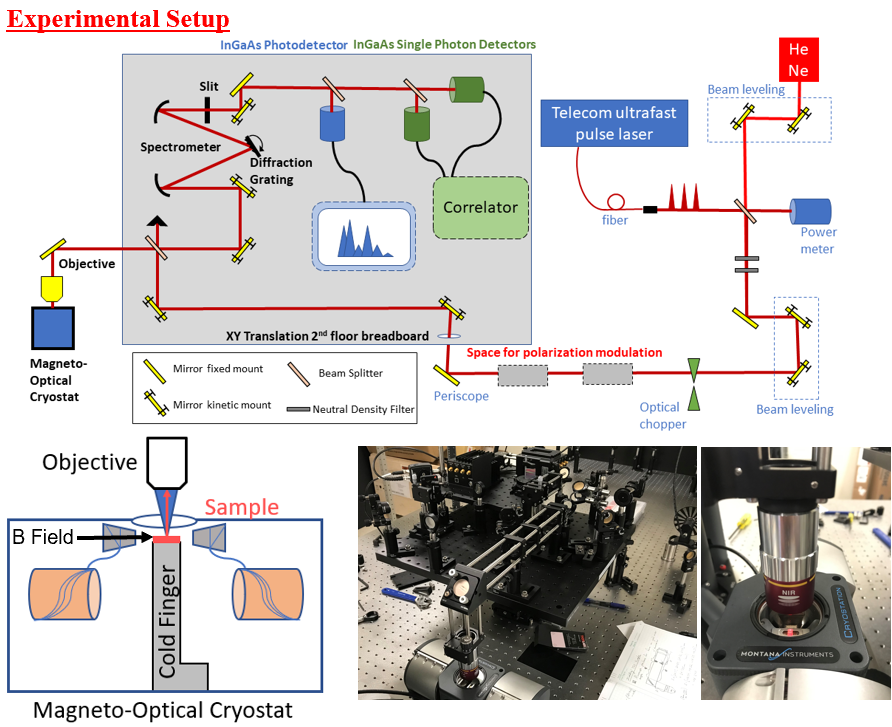
Here’s how the physics works: Quantum optical sensors push beyond classical limits by leveraging detectors with extremely high quantum efficiency, enabling measurements that beat the shot-noise limit and reveal sub-Poissonian photon statistics. If we could use the photo-luminescent signal from an ensemble of erbium ions to identify single-ion emission through photon antibunching, we would have a way to isolate individual qubits. The performance of each qubit is strongly influenced by its local environment. Under an external magnetic field, we used a pulsed broadband laser at 1536 nm to drive transitions between two electronic states of the erbium ion: the ground state and a metastable excited state. A portion of the resulting fluorescence was collected by a microscope objective and passed through a Czerny-Turner monochromator. By scanning the diffraction grating and detecting the optical power with an InGaAs detector and lock-in amplifier, we obtained emission spectra. Fluorescence lifetimes were measured using single-photon counting in zero field. To measure spin coherence times (T₂), we implemented a spin echo protocol by modulating the laser phase and detecting correlated photon arrival times across two detectors. If successful, we could try to enhance signal collection by placing the ions on a thermally tunable VO₂ cavity, which could tune the light-qubit coupling and provide some means of control over the system.
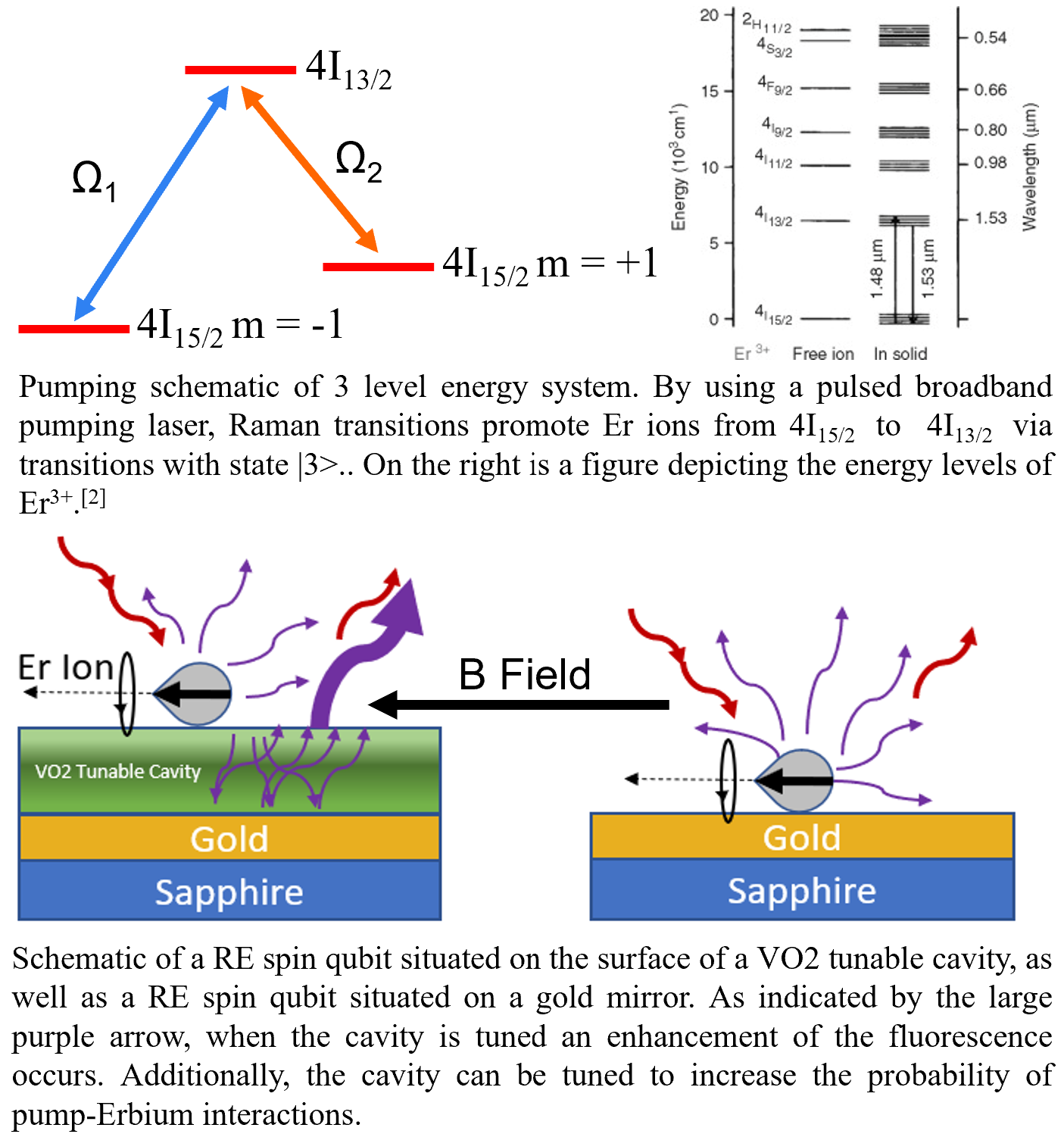
This experiment could best be described as “looking for hay in a needle stack.” The signal was so delicate that I think I only ever observed it twice, each lasting only a couple seconds. Quantum mechanics, being fundamentally a statistical explanation of things, likes to hide behind a curtain of classical noise. When doing quantum optics, you are endlessly characterizing noise. The setup was so delicate that when aligned, someone walking around on the floor above was enough to create a change in photon statistics. Every day I would come in and completely rebuild/align the optics. I would characterize every single element of the setup: laser, beam splitters, mirrors, lenses, everything. I would then spend a few hours taking spectra of the laser (my homemade spectrometer was completely manual), and once I was convinced that the setup was resilient to the rest of the universe, I would wait for the day to end to attempt communicating with single atoms.
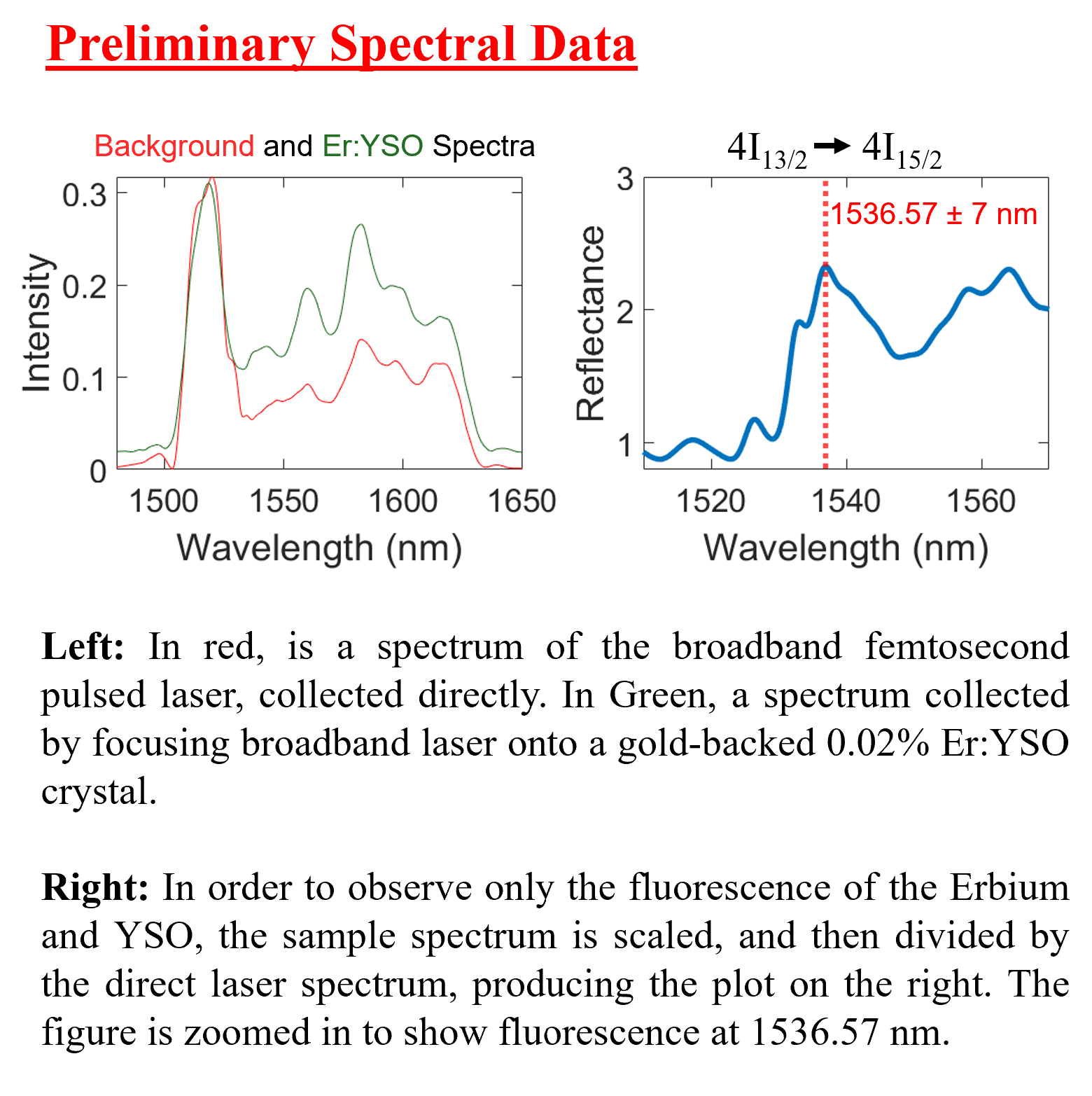
I obtained some preliminary data from an Er doped YSO crystal we had purchased as a reference, but the project began to prove impractical for a PhD project. I presented my work at an APS March Meeting, and moved onto more exciting physics.
2017: Night Sky Quality Monitors
In the last semester of my undergrad, the Department of Physics at TTU was playing around with the idea of requiring senior “Capstone Projects” from students, and because of my experience building electronics for the High Energy Physics labs, I became the guinea pig for this concept. From junior to spring of my senior year, I had been working to bring the life back into a large linear electron accelerator, hoping that I would have it up and running in time to irradiate some stuff as a thesis project. Unfortunately, a custom water-cooled vacuum flange I had made violently failed, resulting in a completely dead project (and a very ruined turbo molecular pump).
The HEP team was becoming invested in the detection of neutrinos from cosmic rays, and had began constructing a prototype instrument, but there was a concern that even in the middle of the West Texas prairies, light pollution might render the venture futile. So, with only a month of time left to do a senior thesis, I began building a device that could monitor the night sky and quantify the light pollution in different locations. The devices were meant to be left out for long periods of time on ranch land around the panhandle, and so it needed to be weatherproof, solar-powered, and capable of faithfully logging large amounts of information. The end goal was to survey the future location of a large experiment, but someone had to make the first one.
I built the prototype by water-proofing Folgers coffee can, housing a TSL237 light to frequency converter and Arduino. The prototype was powered by a small lead acid battery which was charged by a recreational solar panel I found laying around my apartment. Data was logged and stored via a microSD card. Below are a simplified circuit schematic and block diagram of the code.
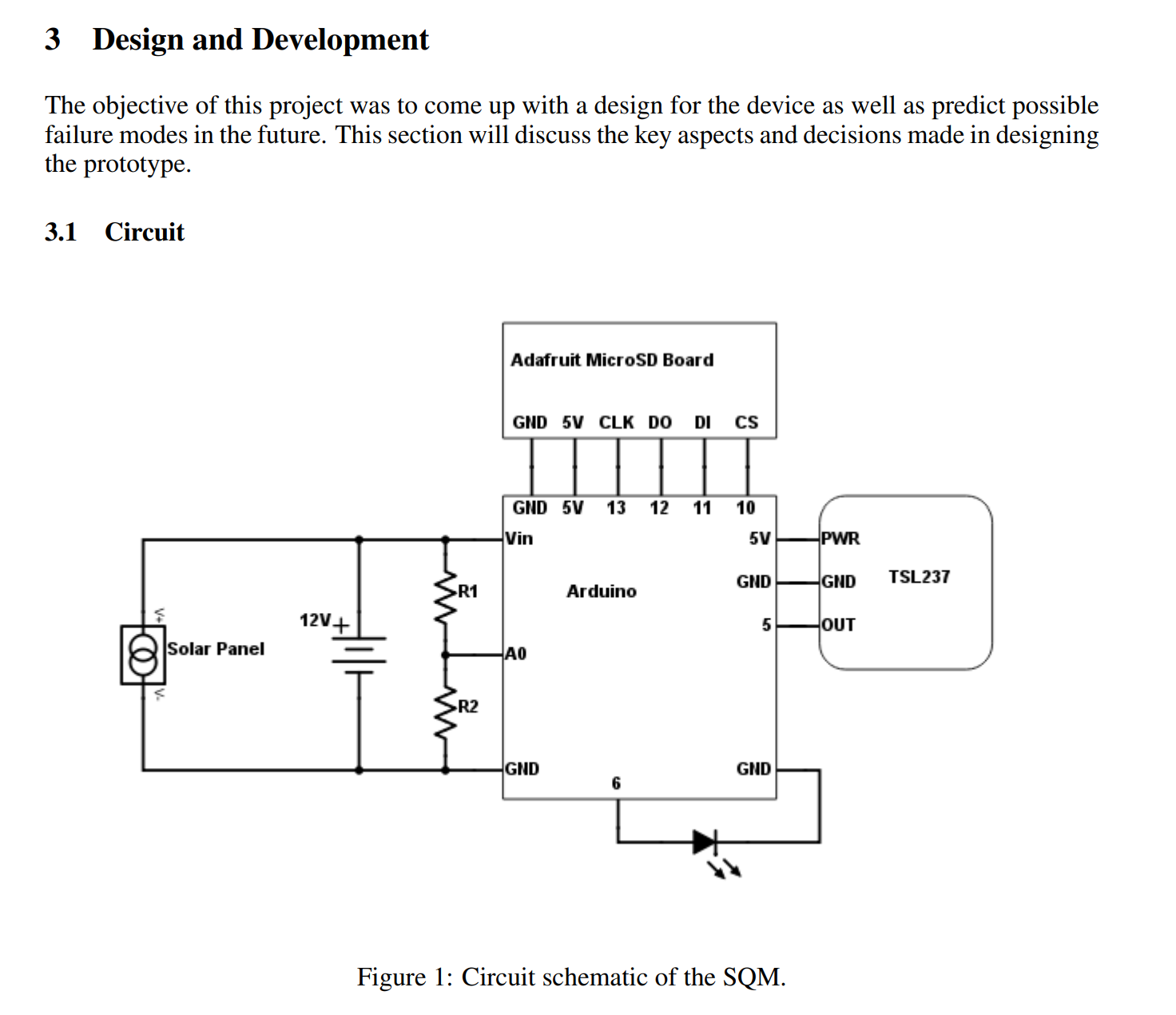
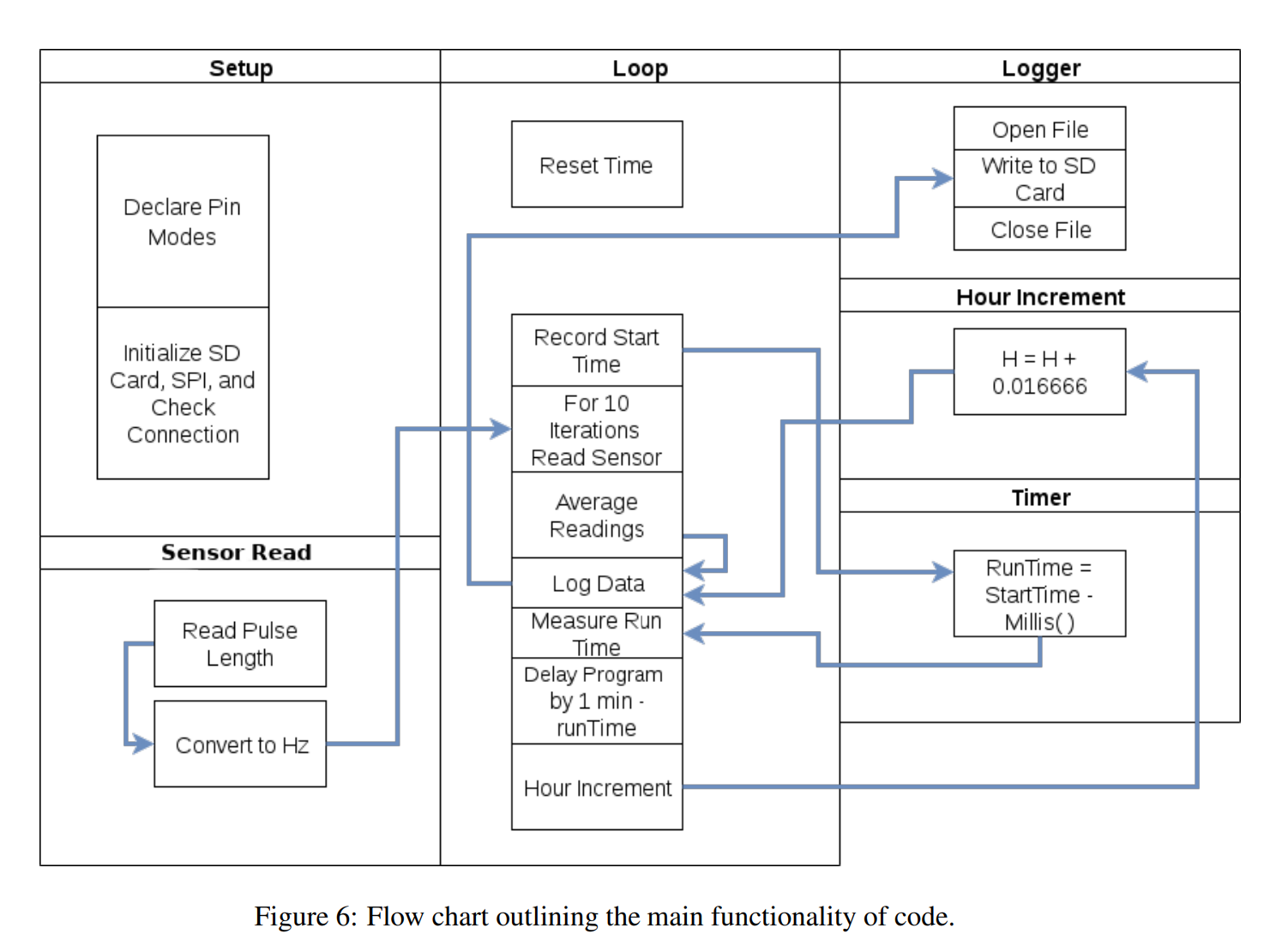
The tricky part of the project ended up being that the MCU needed to log intensity vs time data, and keeping time with an offline Arduino is less than ideal. I came up with a scheme for using the internal clock of the MCU, and correcting the logged time to account for runtime of the main loop, as seen in the block diagram above. The accumulated error from this method was less than negligible over the lifetime of the measurements.
I tested the prototype in two different locations: My backyard near campus (expected to have poor sky quality) and farmland located about 20 miles outside of Lubbock (near a 2m telescope facility, expected to have high sky quality). The results are seen below.
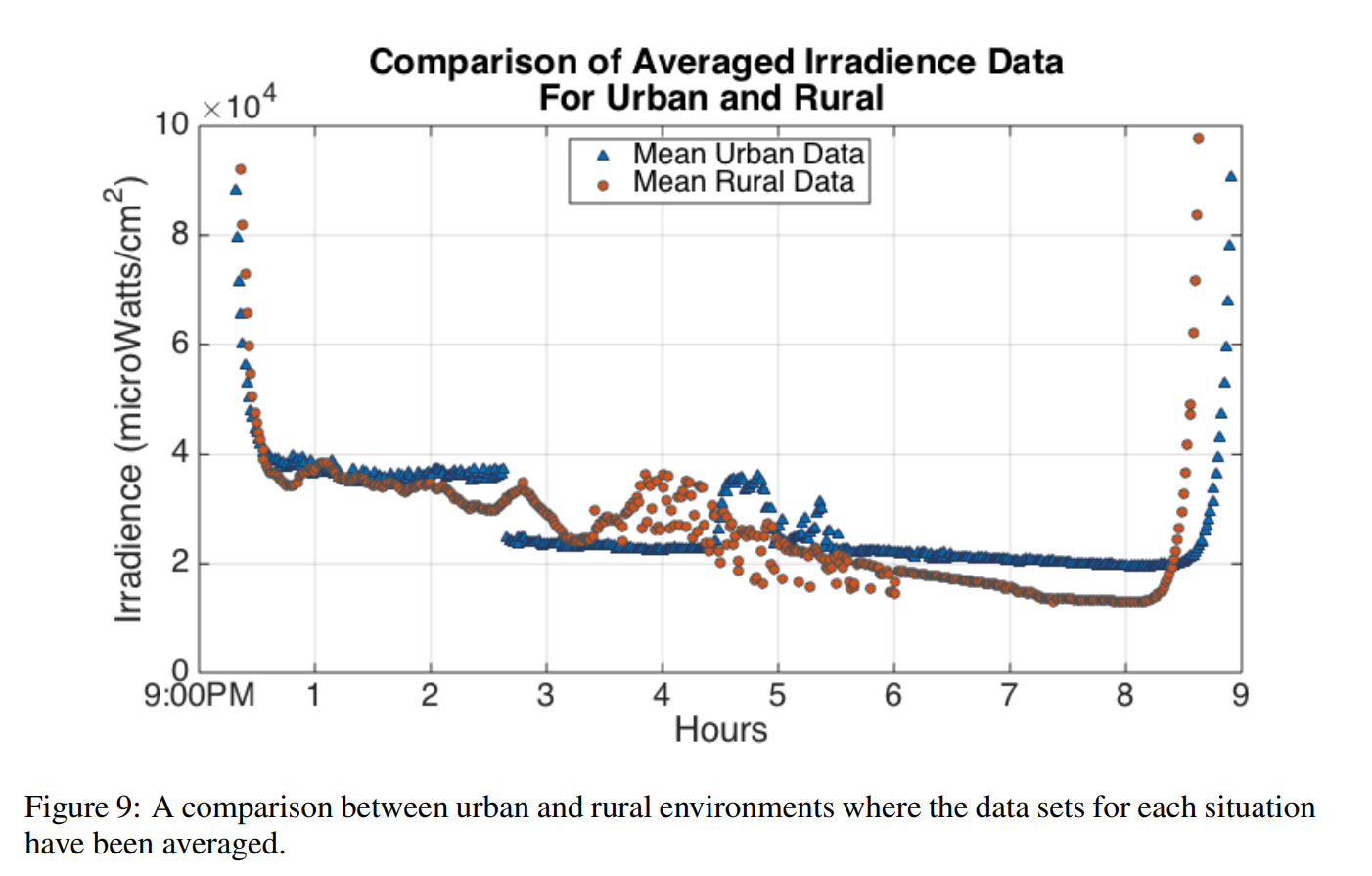
I am not sure what the faculty took from this data, but I remember being surprised at how similar the two locations were. The features in the data could be explained by the moon coming out from behind trees in the urban setting, and clouds rolling in on the night of the rural setting.
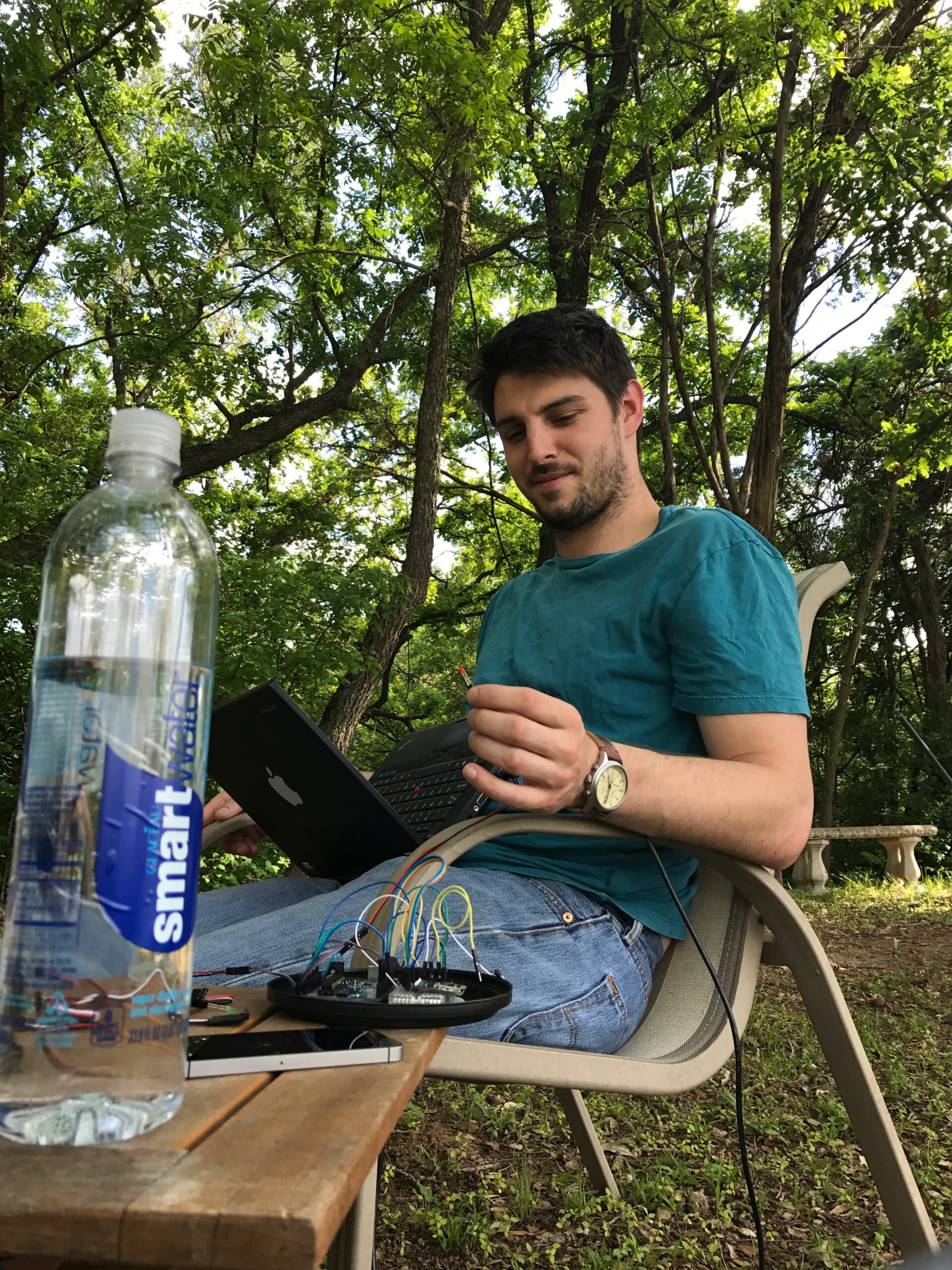
It was a fun and compact project that I hope set the bar for the rest of the senior capstone projects, which was the point. After grades were submitted I took the prototype out to test the night sky quality in Glen Rose TX (the above photo).
